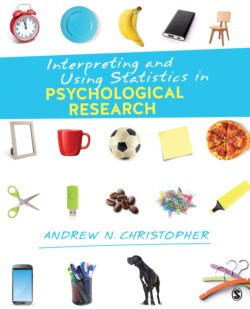Читать книгу Interpreting and Using Statistics in Psychological Research - Andrew N. Christopher - Страница 25
На сайте Литреса книга снята с продажи.
Learning Check
Оглавление1 What is the difference between naturalistic and laboratory observations?A: Naturalistic observations occur in the normal environment in which a behavior occurs. Laboratory observations occur in a more controlled setting. For instance, if we want to study driving behaviors, we could conduct naturalistic observation by watching and recoding driving behaviors on the interstate. We could conduct laboratory observation by using a driving simulator in a research lab.
2 Case studies are not used as much as other descriptive research methods. Why is this the case?A: Case studies tend to be used to study rare phenomena. For instance, much of what we know about the effects of strokes we gained through case studies of people who have actually experienced a stroke. Depending on where precisely in the brain a stroke occurred, a case study allows us to learn what happens when that part of the brain is damaged.
3 Explain the difference between a positive correlation and a negative correlation.A: A positive correlation exists when two variables tend to “move in the same direction.” A negative correlation exists when two variables tend to “move in opposite directions.” For example, there is a positive correlation between the number of hours that students study for tests and their scores on those tests. There is a negative correlation between the amount of alcohol consumed the night before a test and scores on that test.
4 I do a study in which I compare students’ political beliefs at the start of their first year of college and again when they graduate from college. Explain why this study is a quasi-experiment.A: As year-in-school is a participant variable, I cannot randomly assign people to be first-years or seniors. These are naturally occurring groups to which people belong.
5 How does random assignment allow an experimenter to claim that an independent variable influenced a dependent variable?A: Random assignment minimizes preexisting differences between people who are in an experiment. Therefore, with these differences minimized, researchers can isolate the effects of the independent variable on the dependent variable.
6 A college registrar did a research project and found the typical 18- to 22-year-old college student is mentally more alert later in the morning than earlier in the morning. Therefore, her college decides not to schedule any classes before 11 a.m. How is this an example of applied research?A: The college is taking a research finding (that students aren’t as mentally alert early in the morning) and then using it to implement a policy in a specific situation.
